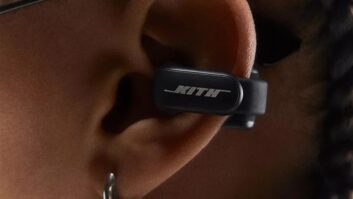Following unusually strong demand during the early part of the year, the major appliance industry now finds itself facing seesawing sales, a 15 percent to 20 percent decline in global steel supply, higher fuel prices and tough year-ago comparisons. But headwinds are nothing new to the stalwart white goods business, as confirmed by the optimistic outlook of its movers and shakers.
David Swift, executive VP of Whirlpool’s North American Region, readily acknowledges the challenges that face the industry and his company as they enter the second half of the year. Nevertheless, “we feel pretty bullish overall,” he said. “We can handle our side of it — continuity of steel supply, cost containment and producing innovative products. The only unknown is the consumer.”
Swift also discounts the impact of rising interest rates on the retail and builder channels, as rates are still hovering near historically low levels, and pent-up housing demand remains high. Of more concern is retail and consumer reaction to higher majap prices, a necessary result of tighter steel supplies worldwide. “They have to be understanding,” Swift said, “and I think they will.”
Indeed, Whirlpool believes its innovative, breakthrough products, rather than their price tags, will be what draws consumer attention. These include its popular Duet laundry pair, now also available under the KitchenAid nameplate as “Ensemble,” and the Gladiator collection of garage storage products and appliances.
Keeping the pipeline filled with “thoroughly compelling, differentiable and sustainable” products for all of Whirlpool’s brands — called “cadence” in company parlance — is a key imperative that has helped move the compass away from commodity white goods while keeping the vendor ahead of the pack. “It makes the association with the trade and the consumer that we’re bringing new and exciting things to market,” Swift said.
Unlike Swift, Jim Campbell, president/CEO of GE’s Consumer & Industrial- Americas division, considers rising interest rates and their impact on home sales a cause for concern, although he expects the industry’s and GE’s “general positive momentum” to continue.
“Rising stock prices and recent tax cuts should offset the slowdown we are starting to see in the housing market,” he said. “But we still expect a good product mix and continued improvement in consumer confidence to yield a strong second half.”
According to Campbell, GE is already enjoying strong sales momentum with “good growth in the high end,” due in part to the continued popularity of stainless steel within its Profile and Monogram platforms. To leverage that popularity, the company recently launched a CleanSteel finish within its GE refrigeration line, which has a stainless steel look but holds magnets and doesn’t fingerprint. “We can’t make it fast enough,” he said, and is encouraged by early sales of a new silver metallic finish within the Hotpoint line.
By contrast, Keith McLoughlin, president/CEO of Electrolux Home Products North America, described the marketplace as choppy for much of the spring following record sales levels, although he still thinks the industry will outpace predictions by the Association for Home Appliance Manufacturers (AHAM) for a 2 percent gain in 2004.
Working in Electrolux’s favor is the emergence of the kitchen as the focus of the home, McLoughlin said, which has well-positioned the company to leverage its visual design and engineering expertise while enriching its product mix. Another advantage, he said, is the vendor’s Frigidaire heritage as a low-cost provider, which allows it to continue to serve the value segment of the market and better contend with high steel prices (“a nightmare for all of us in the industry”), while expanding into premium territory with the new Electrolux-branded Icon line. “I much prefer beginning with a low-cost provider model and building into a higher segment,” he noted.
The latter line, he said, taps into his parent company’s worldwide capabilities, including Italian design, German engineering, U.S. consumer research and, in the area of raw materials, global scale. The result is a melding of form and function that falls between “the extreme contemporary look of Gaggenau and the chunky commercial designs” that were borrowed from industrial kitchens.
Aside from this month’s official launch of Icon — symbolically heralded by the arrival in New York of several SKUs aboard the Queen Mary 2 — McLoughlin has plenty of product percolating in the Frigidaire and Gallery pipelines. This includes “several hundred” new SKUs of cooking pieces over the next 12 to 18 months, including a super-capacity Titan oven that will ship in late July or early August.
The company will also ship a new proprietary dishwasher in August that allows consumers to adjust the temperature, water pressure, sound and speed of the wash cycles, plus an innovative frost-free freezer chest and, later this year, a next-generation of front-load washers.
Like his competitors, Chris Wignall, senior VP/sales at Maytag Corp., contends that “growth in the premium segment will continue to be strong. Rather than waiting for their existing appliances to wear out, we believe more consumers will be trading up to premium products.”
To that end, the company will continue to focus on developing “want-in” products like its new French Door bottom-freezer refrigerators under the Maytag, Amana and Jenn-Air badges (with the latter offered in a counter-depth size). “Consumers love the easy access to the fresh food compartment,” Wignall said. “No more bending and stooping to reach the most frequently used area of the refrigerator.”
Similarly, time-constrained consumers don’t want to devote much time or energy to doing the laundry, preferring to complete this household chore as quickly and efficiently as possible without compromising on results, he explained. This observation led to the development of the Maytag Neptune top loader, an agitator-free, high-efficiency washer that provides all of the benefits of a front loader in a configuration that’s preferred by 65 percent of consumers, as well as the Maytag Neptune Drying Center, which pairs a traditional tumble dryer with a novel upper drying cabinet that reduces shrinkage and minimizes wrinkles.
Similarly, Franz Bosshard, president/CEO of BSH Home Appliances, is “very pleased with our business,” having completed two new factories in New Bern, N.C., on schedule; successfully entering two new business categories, namely laundry and free standing ranges; and developing U.S. sales volume according to plan, thanks to “the market’s favorable response to our new Thermador refrigerator, Bosch Nexxt laundry pair and freestanding ranges.”
With phase one of the new products launch complete, he said the focus is “now on supporting our customers on the sell-through with nationwide advertising and promotion campaigns.”
Looking ahead at the next six months, Bosshard observed that “We are growing at our planned pace and are optimistic for our brands and products” — including the planned launch of a new Bosch Integra Vision dishwasher, which reportedly sets new standards for quietness and convenience — “although overall, the material price increases might hurt the profitability of the industry.”
Marty Friedman, principal of Eastern Marketing, a high-end distributor, is especially optimistic about the next six months. “There are an awful lot of people with an awful lot of money who are willing to spend more than ever,” he observed, pointing to strong demand for $4,000 to $5,000 Zephyr range hoods, his company’s recent record-breaking month and waiting lists at country clubs. “Rate hikes don’t mean a thing, just as gas prices had no effect on driving. Housing is still up, and I just see continued strength in the market.”













